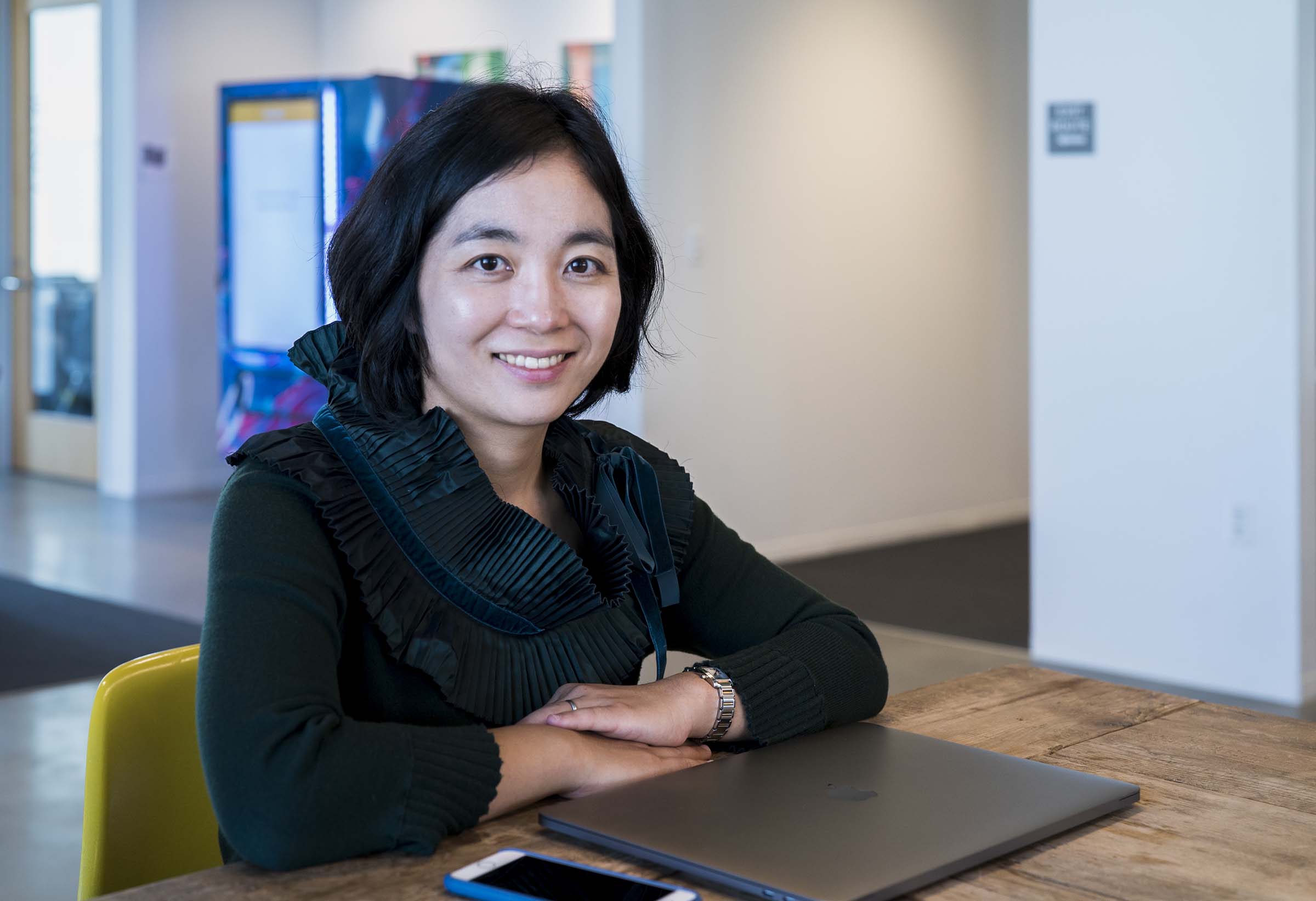
Based on an interview with Meredith Alexander Kunz, Adobe Research
Photo by Claire Qin Li, Adobe Research
Eunyee Koh, senior research scientist at Adobe Research, focuses on machine learning algorithms and computer-human interaction. She’s been with the group since 2008 and leads her own team.
How did your career path lead you to Adobe Research?
I grew up in South Korea, where my dad was a computer science professor. I decided to pursue that field, too, and came to the US for graduate studies. While doing my PhD in computer science at Texas A&M, I presented a paper on PDFs at an academic conference. I was working on PDF metadata—the info behind the document’s main content, such as the author, creation date, summary, and flow of information. At the conference, I met Adobe staff from Adobe Research, and they encouraged me to apply for an internship.
What was it like interning at Adobe Research?
My Adobe Research internship was a life-changing moment for me. I wasn’t sure at first if I wanted to go into academia or industry, but I had an awesome experience at Adobe Research! I worked with Tom Jacobs, director of the Systems Technology Lab at Adobe Research, and Walter Chang, principal scientist. I saw researchers building careers here and becoming domain experts. And I loved working on real users’ problems—with real data and feedback. It’s challenging.
The environment at Adobe Research made me want to move to the US permanently and work here. That was about 10 years ago. Now I have my own team of four researchers and one more researcher will join in mid-December 2017. We are always hiring researchers and engineers who can lead cutting-edge research projects, especially in artificial intelligence and machine learning.
How has your work at Adobe Research helped you advance in your field?
We are asked to find problems we are passionate about solving. And we are collaborative. We cover a diverse set of computer science areas with many domain experts working together. And every year, we have interns who bring new ideas, and our discussions spark innovation. We’re also able to do university collaborations and are encouraged to present papers at academic conferences. It’s a great place to work on many different levels.
Why focus on data?
Humans have a limited attention span. As more and more data becomes available online, it can be overwhelming. If we can learn how to tailor and personalize information for people, then they can access the info they want much more efficiently. The goal is to help people find what they need from the digital world, whether that’s for job searches or new coupons.
What kinds of data problems have you worked on?
I’ve been involved in device graphing. This work focuses on linking users to their various devices—for example, the same person may use a laptop, phone, and tablet. We looked at patterns of login data and used probability in our algorithm.
Knowing this can help marketers more accurately answer “How many people are visiting my site?” rather than “How many devices are visiting my site?” It also allows for more personalization in web content.
What do you see as challenges in your field? Can using data raise concerns?
Data scientists are on the edge of knowing a lot about people, and we have to consider what that means. Going forward, with more and more data, I think a lot about protecting people’s privacy. We need a balance between personalizing and protection.
As a researcher, I’m also mindful that tailoring information can influence a user’s decisions on what to buy, listen to, watch, and more. I’ve experienced this personally: a music service recommends songs based on my preferences. I might like the music, but I can tell that this service is influencing me. We need to be aware of that, too.